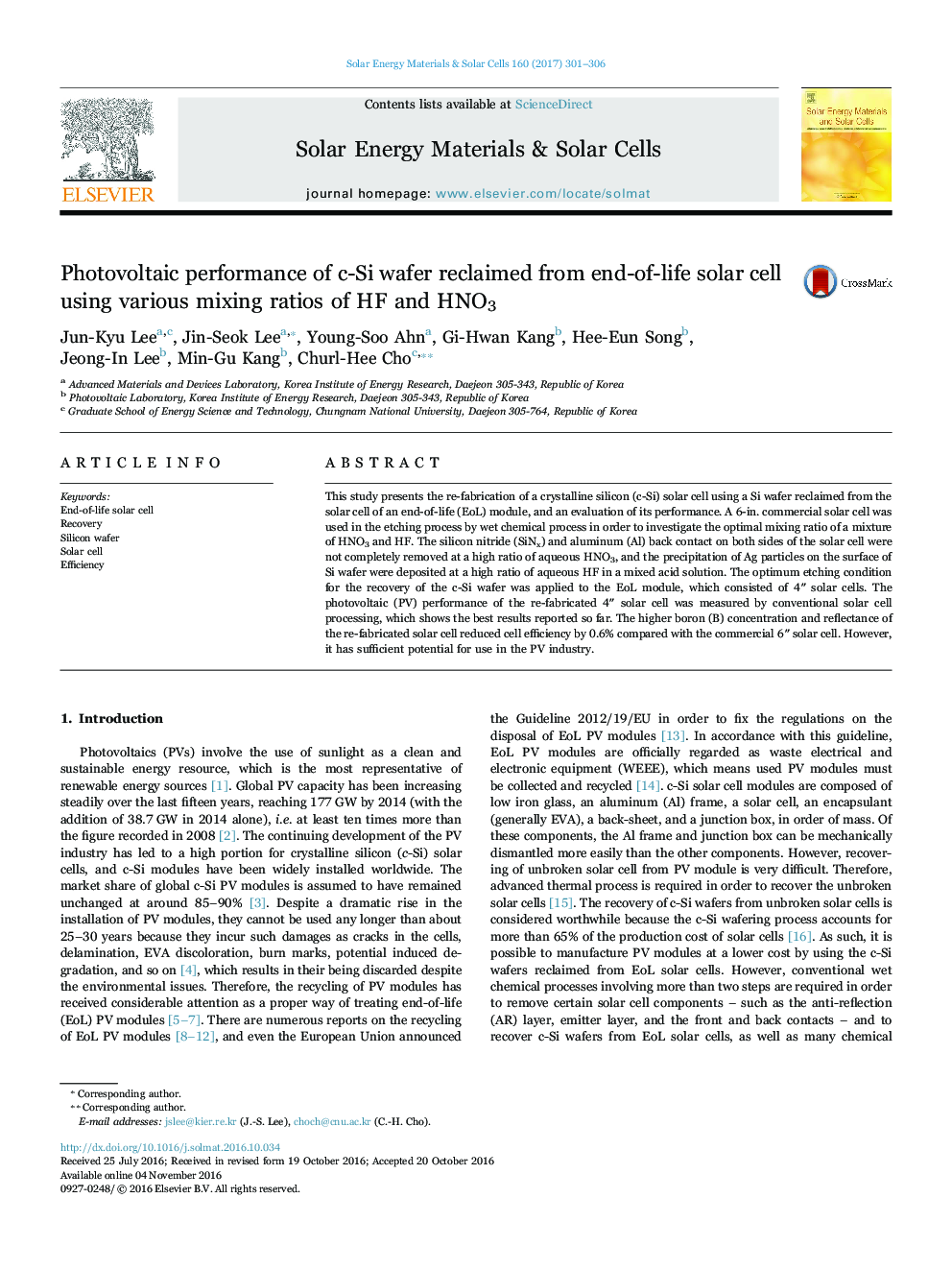| Article ID | Journal | Published Year | Pages | File Type |
|---|---|---|---|---|
| 6457343 | Solar Energy Materials and Solar Cells | 2017 | 6 Pages |
â¢Various mixing ratios of HF and HNO3 were applied in the process of etching the c-Si solar cells for the recovery of a Si wafer.â¢The recovery of the Si wafer from a 4â³ end-of-life solar cell under the optimum etching condition was conducted.â¢The c-Si wafer obtained from the chemical etching process was applied to the commercial solar cell fabrication process.â¢PV performance of the solar cell was evaluated to the efficiency of 17.6%.
This study presents the re-fabrication of a crystalline silicon (c-Si) solar cell using a Si wafer reclaimed from the solar cell of an end-of-life (EoL) module, and an evaluation of its performance. A 6-in. commercial solar cell was used in the etching process by wet chemical process in order to investigate the optimal mixing ratio of a mixture of HNO3 and HF. The silicon nitride (SiNx) and aluminum (Al) back contact on both sides of the solar cell were not completely removed at a high ratio of aqueous HNO3, and the precipitation of Ag particles on the surface of Si wafer were deposited at a high ratio of aqueous HF in a mixed acid solution. The optimum etching condition for the recovery of the c-Si wafer was applied to the EoL module, which consisted of 4â³ solar cells. The photovoltaic (PV) performance of the re-fabricated 4â³ solar cell was measured by conventional solar cell processing, which shows the best results reported so far. The higher boron (B) concentration and reflectance of the re-fabricated solar cell reduced cell efficiency by 0.6% compared with the commercial 6â³ solar cell. However, it has sufficient potential for use in the PV industry.
